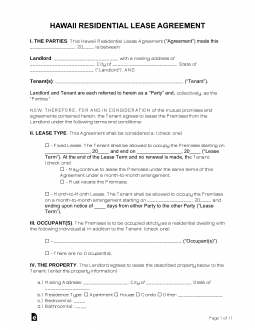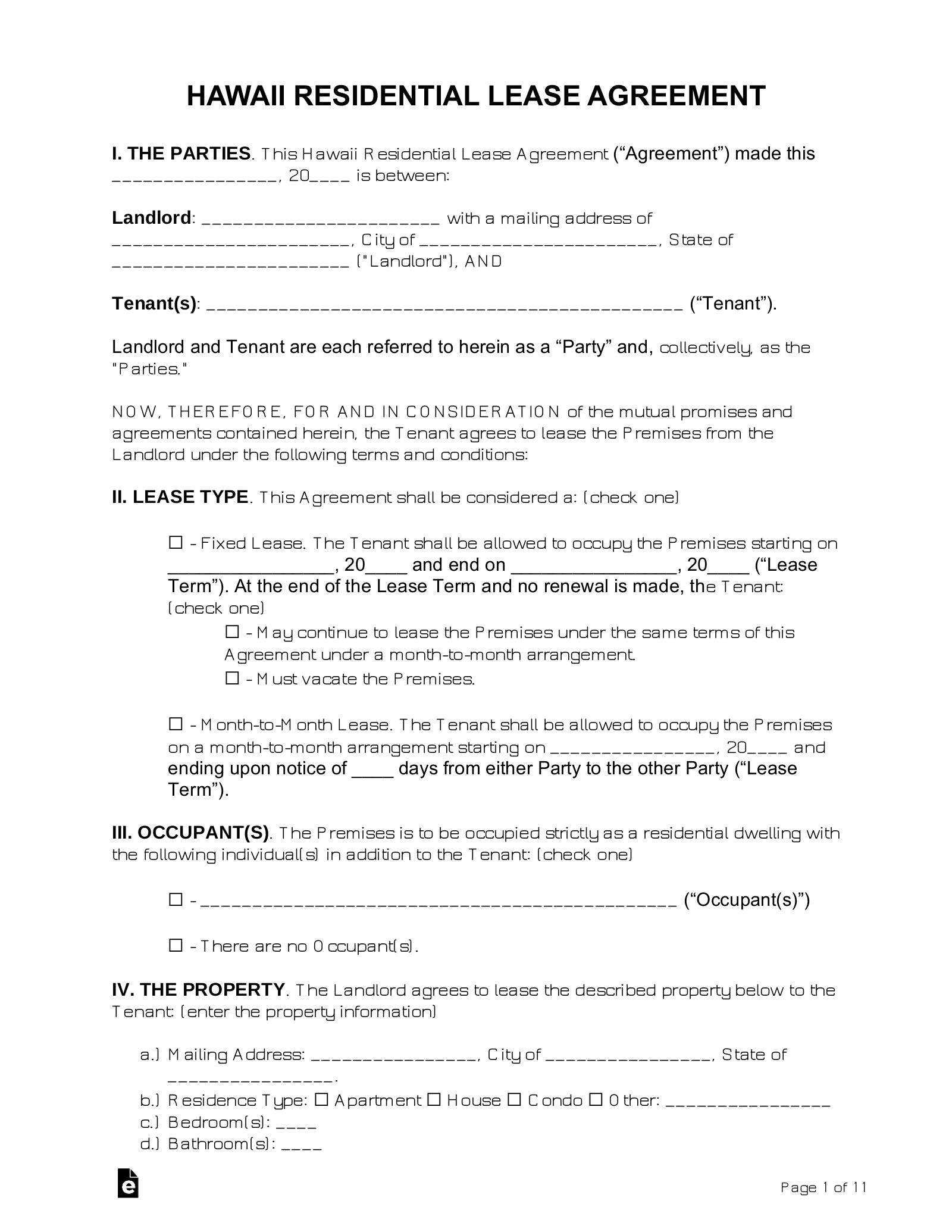Updated November 20, 2023
A Hawaii lease agreement is a document that allows a landlord to rent residential or commercial space to a qualified tenant. Before a lease is signed, the landlord will commonly request the tenant complete a rental application and pay a small fee to run a credit report. If approved, the tenant will be given a property condition report revealing any current damages in the premises, and a lease will be signed afterward.
Table of Contents |
Agreement Types (6)
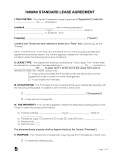 Standard Residential Lease Agreement – Fixed-term arrangement typically for one year. Standard Residential Lease Agreement – Fixed-term arrangement typically for one year.
Download: PDF, MS Word, OpenDocument |
 Commercial Lease Agreement – For any type of non-livable use such as space for a business to operate. Commercial Lease Agreement – For any type of non-livable use such as space for a business to operate.
Download: PDF, MS Word, OpenDocument |
 Month-to-Month Agreement – A lease with no end date and after commencement, the landlord must provide 45 days’ notice to terminate while the tenant must provide at least 28 days.[1] Month-to-Month Agreement – A lease with no end date and after commencement, the landlord must provide 45 days’ notice to terminate while the tenant must provide at least 28 days.[1]
Download: PDF, MS Word, OpenDocument |
 Rent-to-Own Lease Agreement – Typical residential contract that offers a tenant to buy the property from the landlord. Rent-to-Own Lease Agreement – Typical residential contract that offers a tenant to buy the property from the landlord.
Download: PDF, MS Word, OpenDocument |
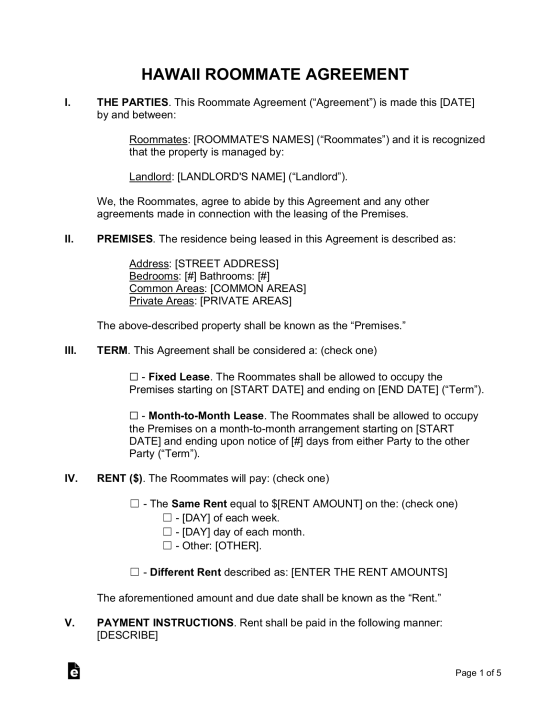 Roommate (Room Rental) Agreement – Between the individuals living in a shared residential arrangement to create: times for cleaning, who pays for what bills, and anything else that should be distinguished between the parties. Roommate (Room Rental) Agreement – Between the individuals living in a shared residential arrangement to create: times for cleaning, who pays for what bills, and anything else that should be distinguished between the parties.
Download: PDF, MS Word, OpenDocument |
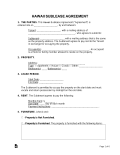 Sublease Agreement – A tenant that is under a legally binding lease with the landlord may re-rent the property to someone else, known as the sub-tenant, with the landlord’s consent. Sublease Agreement – A tenant that is under a legally binding lease with the landlord may re-rent the property to someone else, known as the sub-tenant, with the landlord’s consent.
Download: PDF, MS Word, OpenDocument |
Required Disclosures (3)
- Property Condition Form – Prior to any written agreement, the landlord must provide a copy of the condition of the premises in addition to any furnishings or appliances.[2]
- Lead-Based Paint Disclosure – Federal law requires all landlords/managers to disclose this to all new tenants if the property was constructed before 1978.
- Identification – The landlord must disclose any persons allowed onto the premises. In addition, the landlord must provide their tax excise number to the tenant, so they may be able to file for a low-income tax credit if they qualify.[3]
Security Deposits
Maximum Amount – One month’s rent. An extra fee may be added if the tenant has a pet.[4]
Returning to Tenant – The landlord must return the security deposit within 14 days from the lease end date.[5]
- Itemized List – If the landlord intends to make deductions from the deposit, a written description must be provided within the 14 day period.
When is Rent Due?
Grace Period – Rent is due at the time and place agreed to by the parties. There is no grace period in Hawaii. If payment is not made on the due date, the landlord can send a 5-day notice to quit.
Maximum Late Fee (None) – No maximum. The landlord can charge any amount if it’s mentioned in the lease.
NSF Fee – $25 is the maximum fee for a bad check.[6]
Withholding Rent – If the landlord does not make repairs necessary for health and safety within five days of receiving notice, the tenant may deduct up to one months’ rent for the actual cost of repairs. The tenant must obtain two signed estimates from qualified workers, choose the lower-cost provider, and provide receipts for all work done.[7]
Right to Enter (Landlord)
Standard Access – Landlords are required to give at least two days’ notice to the tenant prior to going inside for any scheduled appointment.[8]
Immediate Access – In the case of an emergency or where providing notice is impracticable, advance notice is not required.[8]
Abandonment
Absence – If a tenant has not paid rent and is absent from the unit for 20 consecutive days without notice, the lease is considered abandoned.[9]
Breaking the Lease – If the tenant abandons the lease, they are responsible for the lesser of the following: 1) the entire rent due for the remainder or the lease or 2) the rent accrued during the period reasonably necessary to re-rent the unit, plus a commission, whether or not the unit is in fact re-rented.[10]
Tenant’s Utility Shutoff – While the law does not specifically require tenants to maintain essential utility services, tenants are required to properly use and maintain the dwelling unit for the health and safety of its occupants.[11]
Unclaimed Property – If the tenant leaves behind property of value after the end of the lease, the landlord, after making efforts to notify the tenant, can sell, donate, or store the property at the tenant’s expense.[12] Any proceeds should be held in trust for the tenant for 30 days, after which they are forfeited to the landlord.[13]

